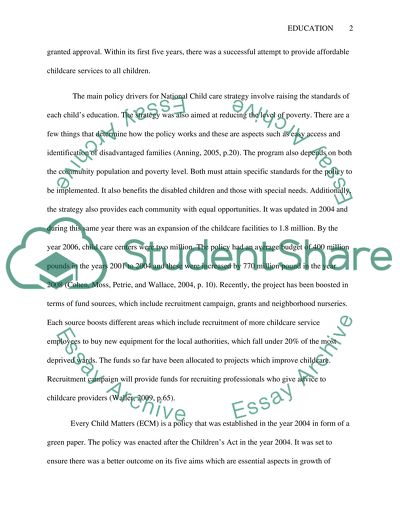Cite this document
(“Whilst Early Childhood Education and Care Policy Took a Central Place Essay”, n.d.)
Whilst Early Childhood Education and Care Policy Took a Central Place Essay. Retrieved from https://studentshare.org/education/1471734-whilst-early-childhood-education-and-care-policy-took-a-central-place-under-new-labour
Whilst Early Childhood Education and Care Policy Took a Central Place Essay. Retrieved from https://studentshare.org/education/1471734-whilst-early-childhood-education-and-care-policy-took-a-central-place-under-new-labour
(Whilst Early Childhood Education and Care Policy Took a Central Place Essay)
Whilst Early Childhood Education and Care Policy Took a Central Place Essay. https://studentshare.org/education/1471734-whilst-early-childhood-education-and-care-policy-took-a-central-place-under-new-labour.
Whilst Early Childhood Education and Care Policy Took a Central Place Essay. https://studentshare.org/education/1471734-whilst-early-childhood-education-and-care-policy-took-a-central-place-under-new-labour.
“Whilst Early Childhood Education and Care Policy Took a Central Place Essay”, n.d. https://studentshare.org/education/1471734-whilst-early-childhood-education-and-care-policy-took-a-central-place-under-new-labour.


